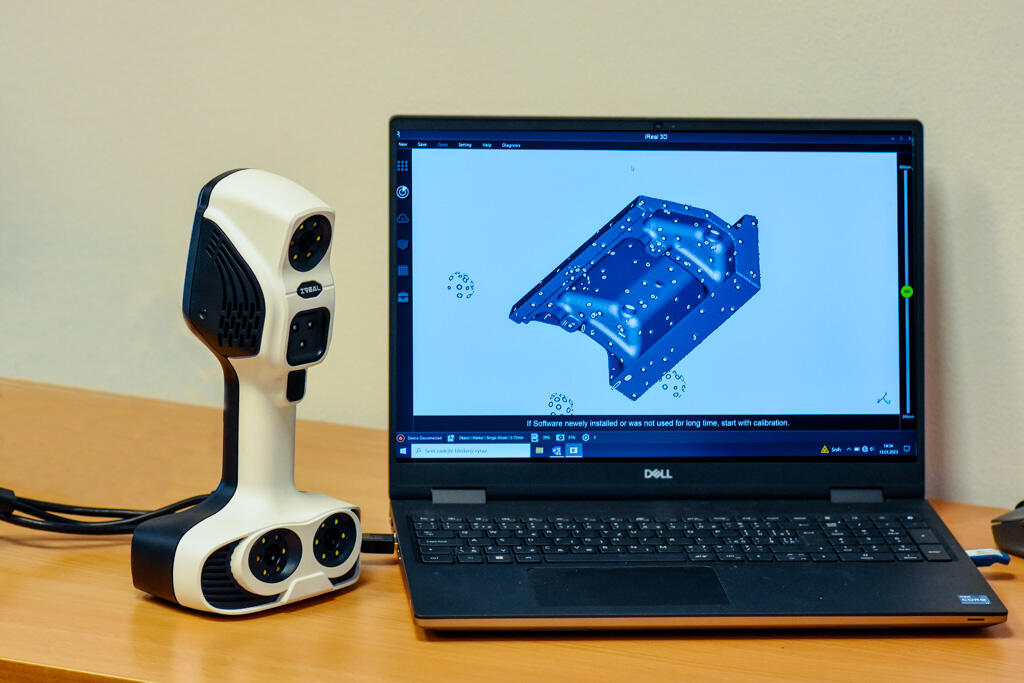How 3D scanners improve the quality of our products and services
In order to live up to our reputation as a world leader in the production of industrial knives, we are constantly innovating the production process and the services we offer. In our extensive machine park with more than 550 machines, you will also find modern color 3D scanners, with which we check the quality of multi meter, shape difficult parts during production and also measure parts and units directly at our customer’s premises around the world.

3D scanners help in the measurement and inspection of medium and large units and parts
Professional industrial 3D scanners allow us to scan larger objects from 0.3 to 3 meters in size, ultra-fast, extremely accurately and conveniently. They stand out for their depth of field of 720 m, a large scanning range of 580 x 550 mm and fast capture of textures and details. They use eye-safe invisible VCSEL infrared structured light, alignment using object shapes, texture, alignment marks and combined modes.
Thanks to 3D scanners, we can create detailed virtual 3D models of objects, where we then analyze their dimensional and shape accuracy with the possibility to modify or model them. Compared to conventional touch methods, these advanced measuring methods bring us several advantages: they provide high data density, accurate and objective results and, last but not least, the ability to easily perform a quick complex analysis of even larger or difficult parts.
3D scanners streamline the control of dimension and shape the accuracy of parts
Detecting errors and defects is very difficult for large or complicated surfaces. In order to streamline quality and precision control, which is one of the important steps in the production process, we use progressive methods in addition to conventional methods. Modern 3D technologies allow us to detect any manufacturing deficiencies in time and significantly reduce the costs that would arise from any subsequent repairs.
In practice, we use 3D scanners mainly for the analysis and inspection of complex parts that have a large number of differently oriented planes or radii. Most often, these are large and complex parts such as sieves or shafts.
3D scanners as a tool of reverse engineering when demanding spare parts or units
In addition to the quality management system, 3D technology helps us improve customer service. If our clients need to replace a damaged, worn or whole part and do not have production data or drawing documentation from the original production, we can offer them a helping hand.
How does it work? We visit customers directly in their production facility – in any country in the world. Customers remove the required part or unit from the machine in advance and prepare it so that it is easily accessible for scanning from all sides. Subsequently, we perform a 3D scan, resulting in detailed documentation. Thanks to this digital data, in some cases we can even print parts on a 3D printer, connect segments and test dimensional compatibility before production.
We have been using 3D technology to measure and inspect parts since 2018 and since then it has become an integral part of our daily practice. It helps us not only in quality management and reverse engineering, but also in the development of prototypes and all innovations.